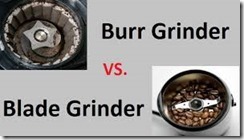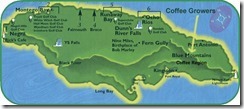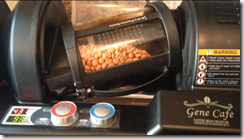Here’s what makes this coffee so individualistic. Monsooned Malabar Coffee is prepared from Arabica cherries (“cherry” refers to dry processed coffees in India) After grading, the “monsooning” is carried out in large open walled warehouses. During the rainy months of June through August, the coffee is spread inside the warehouse where the air is maintained at a particular thickness using specific aeration and ventilation as to allow the coffee beans to slowly absorb moisture. After the beans bloat with moisture they are bagged and stacked to achieve the proper uniform “monsooning.” After September, after the rains and as the temperatures rise, the ghostly white, swollen beans get their final grading. This process is done by hand sorting and with gravity tables. Only after this step will the coffee obtain its Malabar export quality.
(before (green smaller bean) after the monsooning process (whitish larger bean)
This coffee is grown by farmers who also grow and produce pepper, cardamom anise and even oranges! These other crops affect the flavor development within the coffee cherries. The same honeybees pollenate all of the blossoms which all play a magical role.
The tasting notes of this great coffee are very full bodied and creamy. Of course, the roast level plays a big role, but generally you will taste soft fruit tones at lighter roast points, chocolate, caramel, brown sugar and earthy cinnamon tones as well.
Share your thoughts with me! I’d love to hear from you! If you enjoy my blog, please subscribe! Remember..Life is way too short to drink bad coffee..wine too, but that’s a whole different blog.













